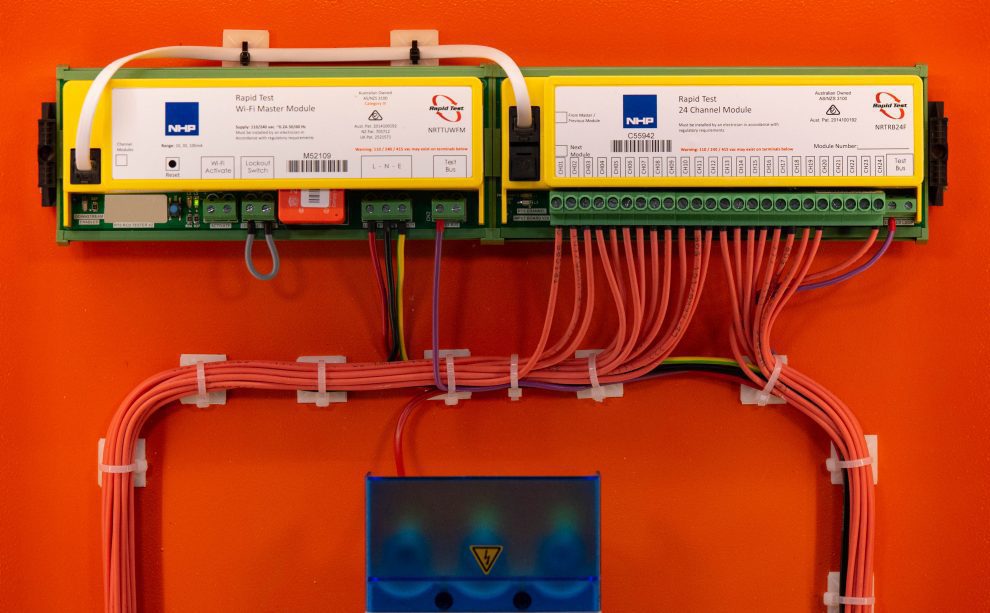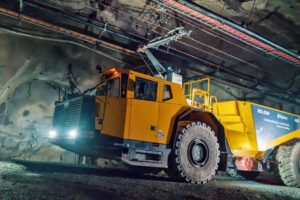The mining sector is one of Australia’s harshest working environments with both visible and invisible hazards, and comprises remote, dusty, unpredictable sites where equipment and installations can quickly deteriorate.
As a result, safety protocols in the mining sector are high, and compliance with safety protocols are paramount to the effective ongoing safety management within the sector.
Regardless of safety protocols, accidents sadly do happen. There were 3 fatalities related to live electrical work in the Western Australia mining sector between 2000 and 2012.
In 2017, Western Australian regulations were updated to state live energised works were not permitted where the works could reasonably be completed on an unenergized installation. Similar legislation is also proposed in Queensland.
As an electrical safety service provider, Rapid Test Systems welcomed this regulatory update. Rapid Test Systems Managing Director, Ainslie Allen, is a licenced Electrician, and has spent considerable time working with the mining sector in Australia. He knows first-hand the impact of unsafe live electrical works, with a close friend suffering severe burn injuries from an arc flash.
“Arc flash is not just limited to large switchboards. It can occur in any switchboard large or small when an electrical current passes through ionised air. An arc flash is a sudden release of heat energy, and the resultant arc flash is often violent with a projectile producing pressure that can throw a person across the room. The injuries sustained from arc flash can be very severe and can include burns and intoxication from vaporised metals.”
Arc flash is likely more prevalent than many may know. According to the US CDC, there are between 5-10 arc flashes per day in the US mining sector, and electrical arc flash incidents are the most common cause of non-fatal electrical injuries.
As an electrician, Ainslie Allen knew there had to be an engineered solution to the complex problem of RCD testing, arc flash and accidental contact with live electrical components.
“The main way to prevent arc flash and accidental contact with live electrical components is by eliminating the hazard. The standard way to do this is to turn the power off to the installation and isolate the equipment before completing any electrical works. As RCD testing relies on simulating a live electrical fault, turning off the power and isolating the equipment is not a workable solution when completing traditional RCD testing. RCD testing at a switchboard, with a fault being simulated by an electrician, has to be completed live”.
Mining professionals also shared the same concerns as Ainslie. “The current method of injection testing was to open the escutcheon panel of the Distribution Board for the electrician to attach the appropriate leads to conduct the testing. Even though they were wearing the correct PPE, this exposed the electrician to live wires.”
“The current method of injection testing was to open the escutcheon panel of the Distribution Board for the electrician to attach the appropriate leads to conduct the testing. Even though they were wearing the correct PPE, this exposed the electrician to live wires and risk.”
Ainslie Allen / Rapid Test Systems, Managing Director
Already in use extensively in the mining sector, an installed RCD test selector switch provides an engineered controlled alternative to traditional RCD testing at a live switchboard, however mining professionals have expressed ongoing safety concerns with this solution. “We looked at and trialled the selector switch which enabled the electrician to stay outside the escutcheon panel, but we found that some of the contact switches used to select the circuit to be tested would weld together. As you switched, this weld would create a dead short and explode”.
A workable long term solution was therefore needed to meet the stringent safety protocols of the mining sector; one that Ainslie Allen knew was vital. “One of the reasons we brought Rapid Test to the market, was to ensure the safety of electricians testing RCD’s at a live switchboard. Rapid Test is a testing device that is installed in your switchboard and replaces the need for a technician or electrician to be exposed to a live switchboard. We all know that regularly tested RCD’s will undoubtedly save lives, so we wanted to ensure that electricians and technicians were able to complete their vital compliance testing safely”.
The feedback from the mining sector has been unanimous. “Rapid Test has solved the need to go behind the escutcheon panel and the need to manually switch between circuits to be tested; the system has eliminated risk elements on site for our electricians. We are now investing to install Rapid Test across our whole fixed plant area.”
Invented and manufactured in Melbourne, Australia, Rapid Test is a 2 part “master and channel board” product that is retrofitted into a switchboard by a licenced electrician. The modules may be installed within a switchboard enclosure and do not need a separate enclosure of their own unless space is limited within the switchboard. Where there is no available space in the switchboard, a retrofit cabinet can be used successfully. Rapid Test can also be preinstalled into new switchboards and distribution boards prior to installation on site.
The Rapid Test master unit contains a RCD tester and is integrated with state of the art wi-fi capability. The channel board unit houses 24 channels and can be connected to 24 RCD’s via a coupling wire. A master unit can connect to up to 10 channel boards, so one master unit can test 240 RCD’s. Only the master unit requires connection to 240v supply.
Under Mining Safety and Inspection Regulations, RCD’s need to be tested as frequently as monthly, and as infrequently as 6 monthly depending on the installation. Like any mechanical device, faults do occur that may render the RCD inoperable, so it is important to ensure your RCD’s function correctly at regular intervals. Regulations also state that detailed records of testing need to be kept which can be challenging to record and retain.
In discussions with the mining sector, Ainslie Allen knew currently accurate record keeping of test results and compliance documentation could be complicated. “Documentation of your RCD testing regime is vital. Standard handwritten reports are slow to prepare and can be illegible. That’s why the internet connected Rapid Test app automatically transfers all RCD testing data to our secure cloud based storage and reporting centre. Here your data is securely stored until you require it”.
The Rapid Test system is designed to be used in conjunction with a tablet device and corresponding Rapid Test app. The app is available for iOS, Android and Windows platforms and collects detailed records of all individual tests completed on each RCD.
Mining professionals have been delighted with the functionality of the app and the Rapid Test system. “One of our problems was the accurate recording of the test results and keeping those reports on file in storage rooms for the expected period of time. We now use the testing data captured by Rapid Test to comply with our statutory obligations quickly and easily.”
Another benefit of the system is remote access to testing data and reports from any internet enabled computer. “The data capture and reporting is proving very useful as it allows us to easily monitor compliance across the fixed plant from one central location. We can also monitor rectification works remotely”.
The feedback across the mining sector has been overwhelmingly positive. “We were looking for a safer and more efficient way to test RCD’s as it is very time consuming and difficult to manage. I wish we knew about this system earlier.”
The Rapid Test systems team can provide demonstrations of the Rapid Test system both in person and online. Wayne Peters, Rapid Test Systems National Sales Manager says “COVID has certainly changed the way we interact with the mining sector! We have developed a training program that can be delivered online, and we work closely with NHP to provide on site support.“
“We 100% guarantee Rapid Test will save you time, money and headaches, all whilst ensuring your RCD compliance. We promise to leave all the jargon at the door, so for more information, and to find out how easy it is to have Rapid Test installed in your facility, we are ready to help! The safety and simplicity of the Rapid Test solution speaks for itself. It truly is compliance made easy.”
You can contact Wayne Peters, National Sales Manager, Rapid Test Systems on 1300 78 1300, and can find out more information at www.rapidtestsystems.com.au or speak to your local NHP representative.
Read more Mining Safety News















Add Comment